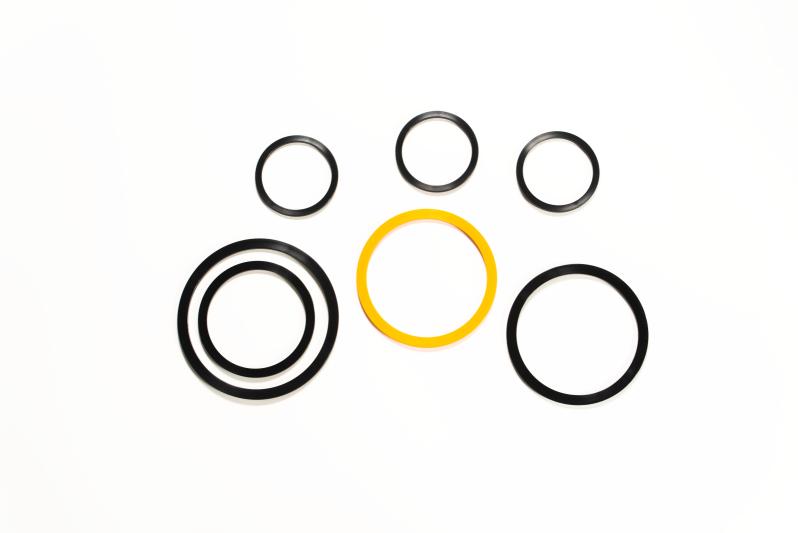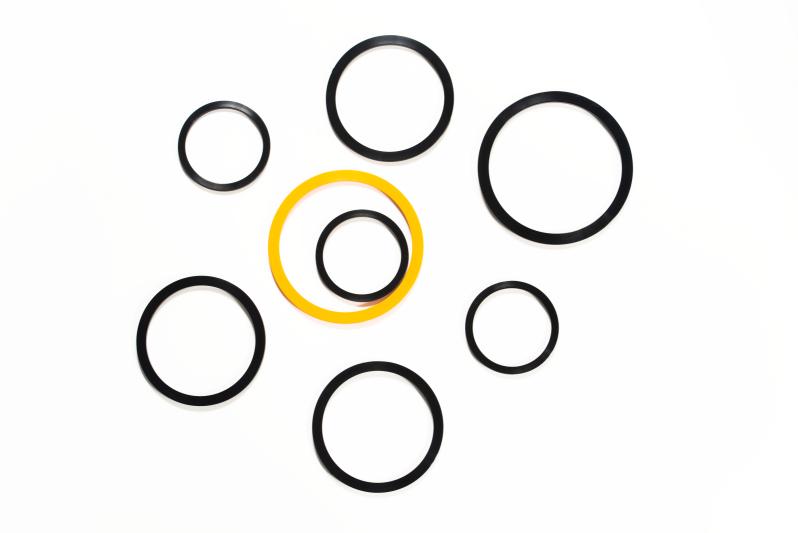Hydraulic systems play a key role in machinery, delivering essential force and movement through fluid power. They are fundamental in sectors such as construction, manufacturing, and transportation. Enhancing seal performance in these systems is crucial for reducing leakage and extending service life. With our extensive expertise and dedication to quality, we have become a trusted international supplier, providing products like the HYDRAULIC CYLINDER SEAL KIT 707-99-14200, Case Seal, and Nok Adjust Hydraulic Oil Seal Kit. Our products are exported to Africa, the Middle East, Southeast Asia, and beyond, underscoring our global presence and dependability.

Understanding Hydraulic Cylinders and Rods
Definition and Function of Hydraulic Cylinders and Valve Rods
Hydraulic cylinders are mechanical actuators that provide unidirectional force through a unidirectional stroke, essential in various machinery for executing tasks such as lifting, pushing, or pulling. Valve rods, integral to hydraulic systems, control fluid flow and direction within the cylinder, ensuring precise movement. Together, they convert hydraulic energy into mechanical work, enabling the smooth operation of heavy-duty equipment across construction, manufacturing, and transportation industries.
Key Components: The Role of Seals in Hydraulic Systems
Seals are crucial in hydraulic systems, preventing fluid leakage and contamination while maintaining pressure. They ensure the efficiency and reliability of hydraulic cylinders and valve rods by creating a barrier that retains hydraulic fluid and excludes external contaminants. By maintaining proper pressure and preventing leaks, seals play a vital role in extending the life and performance of hydraulic components.
Challenges Faced by Hydraulic Seals
Common Issues Affecting Seal Performance
Hydraulic seals face numerous challenges, including wear and tear from constant movement, leakage due to improper installation or degradation, and environmental factors like extreme temperatures and contamination. These issues can compromise seal integrity, leading to reduced performance and increased maintenance needs. Understanding these common problems is essential for implementing effective solutions and maintaining hydraulic system efficiency.
Impact of Suboptimal Seal Performance on Hydraulic System Efficiency and Safety
Suboptimal seal performance can significantly affect hydraulic system efficiency and safety. Leaking seals reduce system pressure, leading to decreased operational efficiency and potential machinery downtime. Moreover, compromised seals can cause fluid contamination, risking damage to other system components and posing safety hazards. Ensuring optimal seal performance is critical for maintaining the reliability and safety of hydraulic systems.
Types of Seals Used in Hydraulic Systems
Overview of Different Seal Designs
Hydraulic systems utilize various seal designs, each serving specific functions. Piston seals prevent fluid from leaking past the piston head, ensuring efficient power transfer. Rod seals keep fluid within the cylinder while allowing the rod to extend and retract. Wiper seals prevent contaminants from entering the cylinder, protecting internal components. Each seal type is tailored to specific operational needs, contributing to the overall performance of the hydraulic system.
Material Considerations: Advantages and Limitations
The choice of seal material is crucial for performance and durability. Rubber seals offer flexibility and good sealing properties but may degrade under high temperatures. Polyurethane seals provide excellent abrasion resistance and longevity, making them ideal for high-pressure applications. PTFE (Polytetrafluoroethylene) seals offer low friction and high chemical resistance but can be more expensive. Understanding the advantages and limitations of each material helps in selecting the appropriate seal for specific operating conditions.
Optimizing Seal Performance
Criteria for Selecting the Right Seal
Selecting the right seal involves considering factors like compatibility with hydraulic fluids, operating temperature and pressure, and expected durability. Compatibility ensures the seal material does not degrade in the presence of hydraulic fluids. Operating conditions such as temperature and pressure influence material choice, while durability considerations include resistance to wear and environmental factors. Meeting these criteria ensures optimal seal performance and longevity.
Innovative Design Features that Enhance Seal Performance
Innovative design features can significantly enhance seal performance. Double-acting seals, for example, provide sealing in both directions of piston movement, improving efficiency. Pressure-balanced designs ensure even distribution of pressure across the seal, reducing wear and extending lifespan. These advanced features address specific operational challenges, contributing to the reliability and efficiency of hydraulic systems.
Maintenance Strategies for Hydraulic Seals
Preventive Maintenance Practices to Extend Seal Life
Preventive maintenance is essential for extending the life of hydraulic seals. Regular inspection and cleaning help identify potential issues early, preventing significant damage. Ensuring proper lubrication reduces friction and wear. Additionally, maintaining optimal operating conditions, such as temperature and pressure, prevents seal degradation. Implementing these practices enhances seal longevity and system reliability.
Troubleshooting Common Seal Problems
Effective troubleshooting is crucial for maintaining hydraulic seals. Identifying symptoms like leakage, abnormal noise, or reduced performance helps pinpoint seal issues. Common problems include wear, improper installation, or contamination. Addressing these issues promptly through proper inspection and repair ensures the continued efficiency and reliability of the hydraulic system.
Replacement Protocols and Timing for Maximum Efficiency
Knowing when to replace hydraulic seals is key to maintaining system efficiency. Establishing protocols based on operating hours, performance metrics, and visual inspections helps determine the optimal replacement timing. Regular replacement prevents unexpected failures and maintains system performance. Adhering to these protocols ensures the hydraulic system operates at peak efficiency.
Future Trends in Seal Technology
Advances in Materials and Design
Emerging trends in hydraulic seal technology focus on advanced materials and innovative designs. New materials, such as enhanced polymers and composites, offer improved resistance to extreme conditions and longer lifespans. Innovative designs, including self-lubricating seals and dynamic sealing systems, provide better performance and reduced maintenance needs. These advancements promise to revolutionize hydraulic systems, making them more efficient and reliable.
Predictive Maintenance and the Role of Smart Technologies
Predictive maintenance, supported by smart technologies, is transforming the maintenance of hydraulic seals. Sensors and monitoring systems can detect early signs of seal degradation, enabling proactive maintenance before failures occur. This approach reduces downtime and maintenance costs while extending the lifespan of hydraulic components. The integration of smart technologies ensures optimal performance and reliability of hydraulic systems, paving the way for more efficient maintenance strategies.
Closing Words
Optimizing hydraulic cylinder and valve rod seals is vital for improving hydraulic system performance and reliability. Key steps include understanding seal functions and types, tackling common challenges, and choosing appropriate materials and designs. Effective preventive maintenance and the adoption of cutting-edge technologies further enhance seal longevity and system efficiency. As materials and smart technologies advance, the durability and predictive maintenance of hydraulic seals will continue to improve. Committed to quality and innovation, we offer dependable seal solutions that cater to international market demands, ensuring peak performance and extended lifespan for hydraulic systems.

